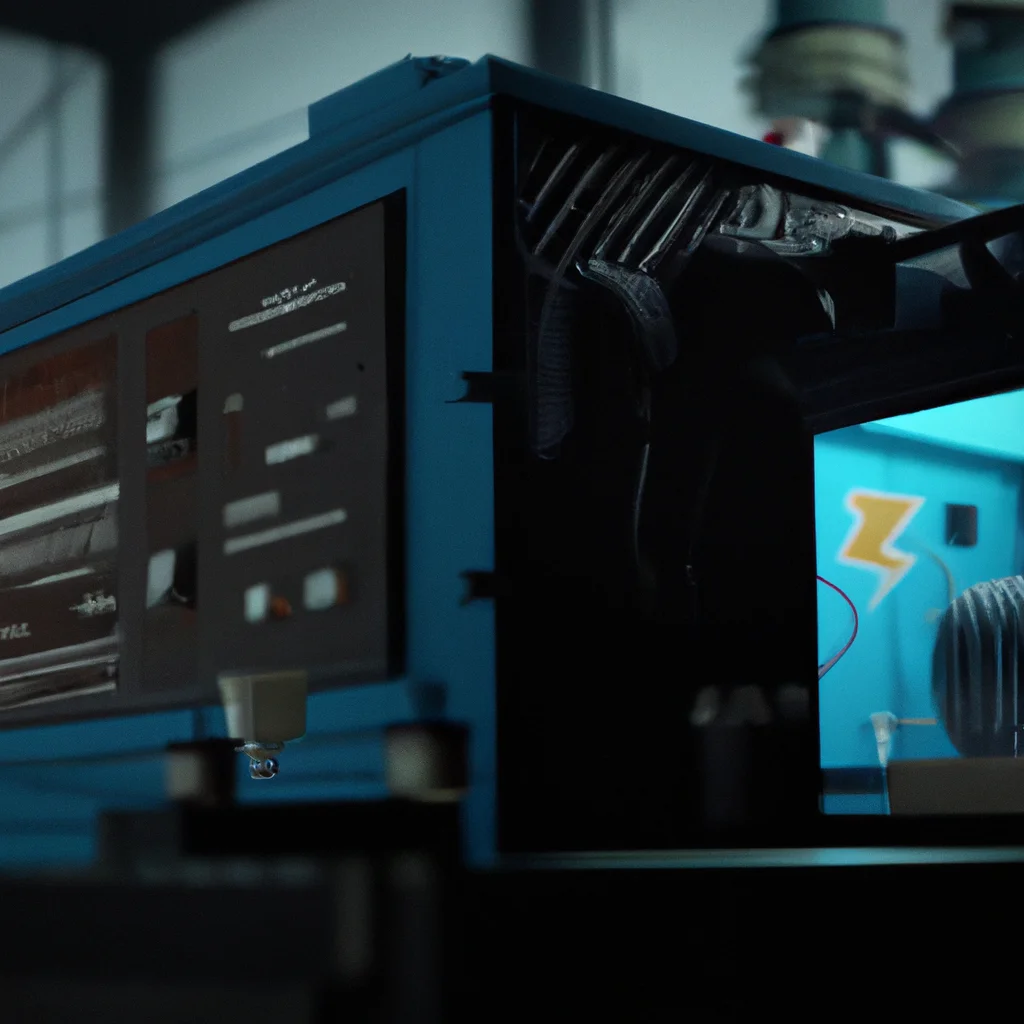How does a power generator generate electricity?


How does a power generator generate electricity?
Power generators are devices that convert mechanical energy into electrical energy. They are widely used to provide power in areas where the electrical grid is not available or as backup power in case of a power outage. In this article, we will explore how a power generator generates electricity, the working principle of a generator, the different types of generators available, and their applications.
Generator Working Principle
The working principle of a generator is based on Faraday’s law of electromagnetic induction. According to this law, a changing magnetic field induces an electric current in a conductor. A generator has a rotating magnet, called a rotor, and a stationary conductor, called a stator. As the rotor rotates, it creates a changing magnetic field that induces an electric current in the stator windings.
The generator’s rotor is powered by an external source, such as an engine or a turbine. As the rotor spins, it generates a magnetic field that passes through the stator windings, creating an electric current. The stator windings are connected to a load, such as a light bulb or an electrical appliance, which uses the electrical energy produced by the generator.
Generator Types
There are several types of generators available, each with its own advantages and disadvantages. The most common types of generators are:
1. Portable Generators: Portable generators are small, portable devices that are used to provide power in areas where the electrical grid is not available. They are powered by gasoline or propane and are ideal for camping, outdoor events, and emergency backup power.
2. Inverter Generators: Inverter generators are similar to portable generators but have additional electronics that provide a stable and clean power output. They are ideal for sensitive electronics, such as laptops and mobile phones, that require a stable power supply.
3. Standby Generators: Standby generators are large, stationary devices that are installed permanently in a building or home. They are powered by natural gas or propane and provide backup power in case of a power outage. They are ideal for homes or businesses that require uninterrupted power supply.
4. Diesel Generators: Diesel generators are large, heavy-duty devices that are used in industrial and commercial applications. They are powered by diesel engines and can provide a large amount of power for extended periods. They are ideal for use in construction sites, remote areas, and backup power for large buildings.
Electricity Generation
Electricity generation is the process of producing electrical energy from various sources, such as coal, natural gas, wind, and water. Power generators are used to convert mechanical energy into electrical energy, which is then distributed through the electrical grid to homes, businesses, and industries.
The process of electricity generation involves several steps:
1. Fuel Source: The first step in electricity generation is to choose a fuel source. The most common fuel sources are coal, natural gas, and nuclear power.
2. Power Generation: Once the fuel source is chosen, it is used to heat water and produce steam. The steam then drives a turbine, which is connected to a power generator.
3. Electrical Distribution: The electricity produced by the generator is then transmitted through the electrical grid to homes, businesses, and industries. The electrical grid is a network of power lines and transformers that transport electricity from power plants to consumers.
Applications of Power Generators
Power generators have a wide range of applications, from providing backup power to homes and businesses to powering remote construction sites and outdoor events. Some of the most common applications of power generators include:
1. Emergency Backup Power: Power generators are used to provide backup power in case of a power outage. They are ideal for homes, hospitals, and businesses that require uninterrupted power supply.
2. Outdoor Events: Power generators are used to provide power for outdoor events, such as concerts, festivals, and sporting events.
3. Construction Sites: Power generators are used to provide power for construction sites where the electrical grid is not available.
Conclusion
Power generators are essential devices that provide electrical energy in areas where the electrical grid is not available or as backup power in case of a power outage. They work on the principle of electromagnetic induction and come in various types, including portable, inverter, standby, and diesel generators. They have a wide range of applications, from providing backup power to homes and businesses to powering remote construction sites and outdoor events. Understanding how power generators generate electricity is crucial for choosing the right type of generator for your needs.
Recent Posts
How do I create an engaging and informative online quiz or assessment?
Creating an engaging and informative online quiz or assessment can be a powerful tool for… Read More
What are the most effective methods for managing and reducing work-related stress in the hospitality industry?
Work-related stress is a common issue in the hospitality industry, where employees often face long… Read More
How can I improve my assertiveness and communication skills in a leadership position?
In a leadership position, assertiveness and effective communication skills are crucial for success. Being able… Read More
What are the key elements of a successful employee recognition and rewards program?
Employee recognition and rewards programs play a crucial role in motivating and engaging employees, as… Read More
How do I effectively manage and respond to customer feedback and reviews?
Customer feedback and online reviews play a crucial role in shaping a company's reputation and… Read More
What are the best strategies for effective time management as a stay-at-home parent?
Effective time management is crucial for stay-at-home parents who juggle multiple responsibilities on a daily… Read More